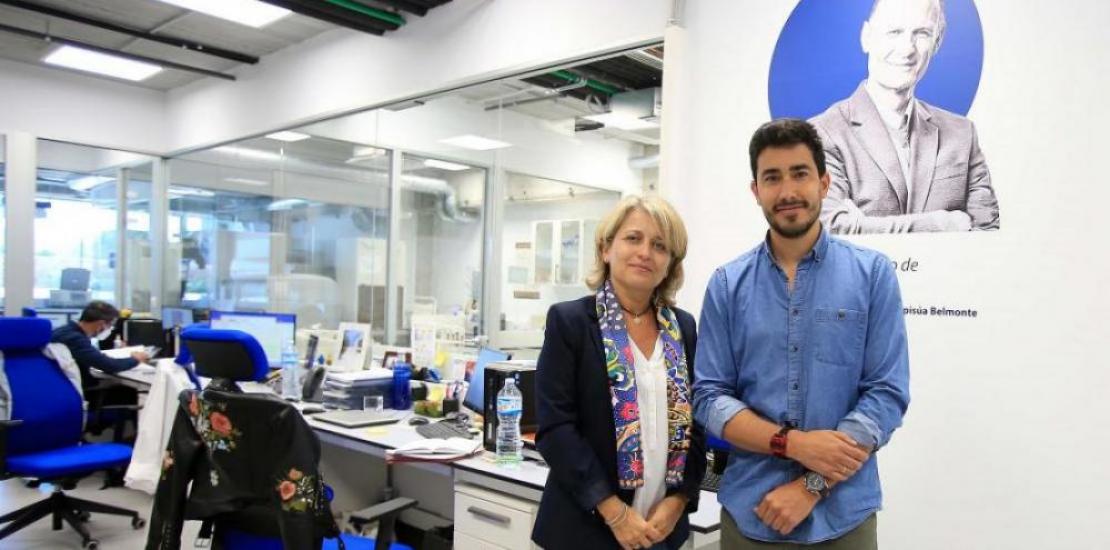Izpisua uses cell regeneration therapy to repair damaged liver tissue quickly and safely
The team of scientists led by Dr Juan Carlos Izpisua Belmonte, Extraordinary Professor of Developmental Biology at UCAM, has managed to improve and accelerate the regeneration of damaged liver tissue in mice, which could lead to new treatments to cure liver diseases.
Mammals do not regenerate their organs as efficiently as other vertebrates, such as fish or salamanders, do. The team of Dr. Izpisua, also a professor in the Salk Institute's Gene Expression Laboratory, where he holds the Roger Guillemin Chair, and director of the Institute at Altos Labs, Inc. has been able to partially rejuvenate liver cells, allowing them to regenerate damaged tissue quickly. The results, published in the journal Cell Reports derive from a project promoted and funded by UCAM. They reveal that the use of reprogramming molecules improves cell growth and regeneration of liver tissue in mice.
"We are excited about the progress made in repairing damaged liver cells because one day, approaches like this one could be used to regenerate entire livers," says Dr Izpisua Belmonte. "Our findings could lead to the development of new therapies to cure infections, cancers, genetic liver diseases or metabolic diseases such as hepatic steatosis".
In other studies, also promoted and funded by UCAM, the authors of this study have previously demonstrated how the use of four cellular reprogramming molecules - Oct-3/4, Sox2, Klf4 and c-Myc, also called 'Yamanaka factors', can slow down the ageing process and improve the regenerative capacity of muscle tissue in mice. In the current study, researchers used Yamanaka factors to increase liver size and improve liver function, while prolonging the health of the mice over time. The reprogramming process used consists of partially converting mature liver cells into 'younger' cells, which promotes cell growth and function.
The problem faced by many researchers in this field is how to control the expression of the Yamanaka factors to rejuvenate cells and improve their function, as some of these molecules can cause uncontrolled cell growth, as in the case of cancer. "With the help of Dr. Izpisua Belmonte we were able to solve this problem by applying Yamanaka factors for short periods of time. The treatment was administered to the mice for only one day", explains Estrella Núñez, co-author of the article and vice-rector of Research at UCAM- "The team then monitored the activity of the partially reprogrammed liver cells by taking regular samples and keeping a close eye on how the cells divided over time. Even after nine months, about a third of the mice's lives, none of them had tumours.
"The Yamanaka factors are really a double-edged sword," says the paper's first author, Tomohaki Hishida. "On the one hand, they have the potential to enhance the regeneration of damaged liver tissue, but on the other hand, they have the disadvantage of potentially generating tumours. To discover that our short-term induction protocol has the good effects, but not the bad ones, is important: it enhances liver regeneration and does not cause cancer.
The results of this study show a second discovery by studying this reprogramming mechanism in cell cultures in the laboratory: A gene called TOP2A, which is involved in liver cell reprogramming, is highly active one day after short-term treatment with Yamanaka factors. TOP2A encodes topoisomerase IIα, an enzyme that helps unwind the two strands of DNA so that genes can be expressed. "When we blocked this gene, topoisomerase IIα levels decreased and the rate of cell reprogramming was reduced 40-fold, resulting in far fewer young cells," says Rubén Rabadán, co-author of the study and postdoctoral researcher at UCAM. The exact role of the TOP2A gene in this process is still being studied.
"There is still a lot of work to be done before we can fully understand the molecular basis underlying the reprogramming processes of cell rejuvenation," says Izpisua Belmonte, "which is essential for developing effective medical treatments to reverse the effects of human diseases.
This work is funded by the Universidad Católica de Murcia (UCAM), the Dr. Pedro Guillén Foundation and a research grant from the Uehara Memorial Foundation.




